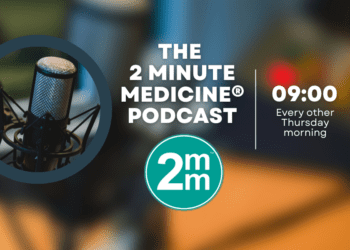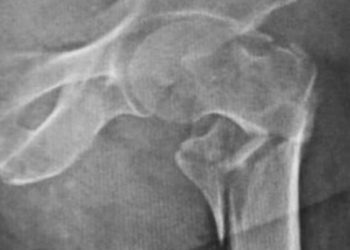Common surgical procedures linked with increased risk of chronic opioid use
1. In a retrospective cohort analysis, opioid-naïve patients undergoing one of several common surgical procedures were at higher risk of developing chronic opioid use in the subsequent year compared to patients not undergoing surgery.
2. Other risk factors for developing chronic opioid use post-operatively included age greater than 50 years, male sex, history of depression, alcohol or drug abuse, and pre-operative use of benzodiazepines or antidepressants.
Evidence Rating Level: 2 (Good)
Study Rundown: Chronic opioid use is a growing problem in the United States and is associated with significant morbidity and mortality. Previous studies have shown that in surgeries traditionally thought to involve significant post-operative pain, there is increased risk of developing chronic opioid use. The relative increase of risk attributed to surgery has been difficult to estimate as it has not been compared with non-surgical patients. This current study sought to evaluate the risk of chronic opioid use following several common surgical procedures in opioid-naïve patients.
Compared with patients who did not undergo surgery during the study period, those undergoing total knee arthroplasty (TKA), total hip arthroplasty (THA), open cholecystectomy, simple mastectomy, laparoscopic cholecystectomy, open appendectomy, or cesarean delivery were at increased risk of developing chronic opioid use. Risk factors for developing chronic opioid use after surgery included male sex, age greater than 50, past history of depression or antidepressant use, history of alcohol or drug abuse, and use of benzodiazepines. Strengths of the study included the large cohort size and the relatively long duration of time studied. Limitations of this study included significant differences in baseline characteristics between the surgical and non-surgical group. Additionally, the data was dependent on electronic health records, which are often inaccurate or incomplete.
Click to read the study, published today in JAMA Internal Medicine
Relevant Reading: Rates and risk factors for prolonged opioid use after major surgery: population based cohort study
In-Depth [retrospective cohort]: This study used health data from the MarketScan database of insured patients from 2001 to 2013. Patients included in the study were between ages 18 to 64 years old, were enrolled for at least 3 consecutive years, and underwent one (and not more) of the following surgical procedures: TKA, THA, laparoscopic or open cholecystectomy, laparoscopic or open appendectomy, cesarean delivery, functional endoscopic sinus surgery (FESS), cataract surgery, simple mastectomy, or transurethral resection of the prostate (TURP). Patients were considered opioid naïve if they had not filled an opioid prescription in the one month prior. Chronic opioid use was defined as having filled 10 or more prescriptions, or more than 120-day supply (excluding the first 90 post-operative days).
A total of 641 941 surgical patients were compared to a non-surgical control of 18 011 137 patients. Incidence of chronic opioid use for non-surgical patients was 0.136%, while incidence ranged from 0.119% to 1.41% for the different surgeries. After adjusting for known confounders, the patients undergoing TKA (OR 5.10; 95%CI 4.67-5.58), open cholecystectomy (OR 3.60; 95%CI, 2.80-4.62), THA (OR 2.52; 95%CI 2.11-3.01), simple mastectomy (OR 2.65; 95%CI 2.28-3.08), laparoscopic cholecystectomy (OR 1.62; 95%CI 1.49-1.76), open appendectomy (OR 1.69; 95%CI 1.24-2.31), or cesarean delivery (OR 1.28; 95%CI 1.12-1.46) had higher risk of developing chronic opioid use. Patients undergoing TURP, FESS, laparoscopic appendectomy, or cataract surgery did not have increased risk of chronic opioid use. Risk factors for post-operative chronic opioid use included male sex (OR 1.34, p < 0.001), age greater than 50 (OR 1.74, p < 0.001), benzodiazepine use (OR 1.82, p < 0.001), antidepressant use (OR 1.65, p < 0.001), depression (OR 1.15, p = 0.3), alcohol abuse (OR 1.83, p < 0.001), and drug abuse (OR 3.15, p < 0.001).
Image: PD
©2016 2 Minute Medicine, Inc. All rights reserved. No works may be reproduced without expressed written consent from 2 Minute Medicine, Inc. Inquire about licensing here. No article should be construed as medical advice and is not intended as such by the authors or by 2 Minute Medicine, Inc.






![Adverse pregnancy outcomes associated with thrombophilias [Classics Series]](https://www.2minutemedicine.com/wp-content/uploads/2015/07/Classics-2-Minute-Medicine-e1436017941513-75x75.png)
